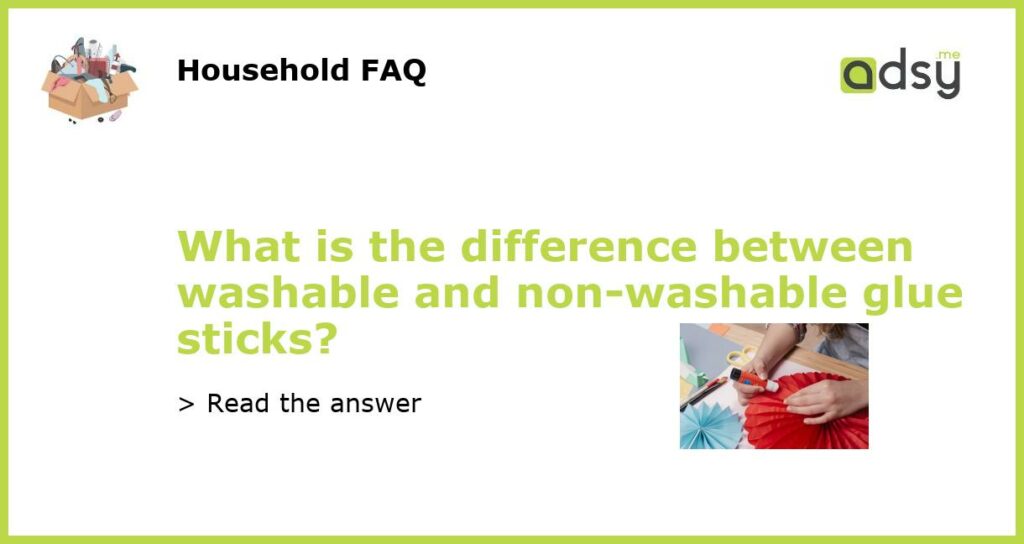The Basics of Washable and Non-Washable Glue Sticks
When it comes to choosing a glue stick, one factor to consider is whether it is washable or non-washable. In simple terms, washable glue sticks can be washed out with water, while non-washable ones cannot. But what exactly is the difference between the two? Let’s take a closer look.
Understanding Washable Glue Sticks
Washable glue sticks are made with a formula that allows them to be easily washed out with water. They are often marketed to parents and teachers of young children who may want to clean up their projects easily. And while they are washable, they can still be strong adhesive agents for certain materials, especially paper and cardboard.
Getting to Know Non-Washable Glue Sticks
Non-washable glue sticks, on the other hand, are made with a formula that is not designed to dissolve in water. This means that once they are applied, they will stay in place, even if exposed to moisture. They are often preferred for more permanent projects that require a stronger bond, such as scrapbooking or bookbinding.
Choosing the Right Glue Stick for Your Project
The choice between washable and non-washable glue sticks ultimately depends on the project you are working on. If it is something that may need to be washed out, such as a child’s craft project or a temporary application, then a washable glue stick may be the better choice. But if you need a permanent and strong bond, then a non-washable glue stick would be the better option.
Tips for Using Glue Sticks
Regardless of which type of glue stick you use, there are a few tips to keep in mind for optimal results. First, make sure the surface you are applying the glue to is clean and dry. Second, apply the glue in a thin, even layer for the best adhesion. And finally, press the two surfaces together firmly to create a strong bond.
Washable and non-washable glue sticks may seem similar at first glance, but they each have their own unique properties and are designed for different project needs. By understanding the differences between the two, you can make an informed decision about which type to use for your project and achieve the best possible results.






